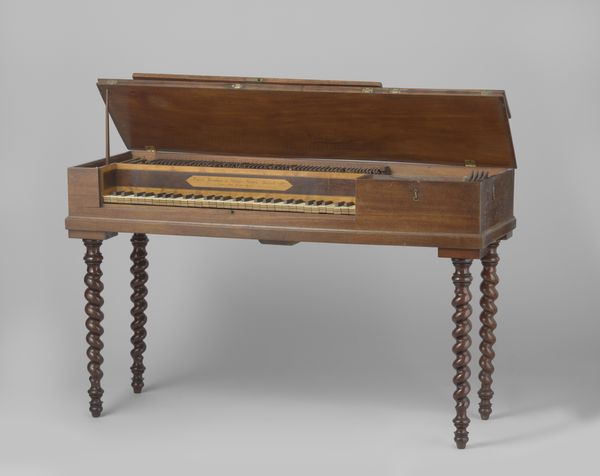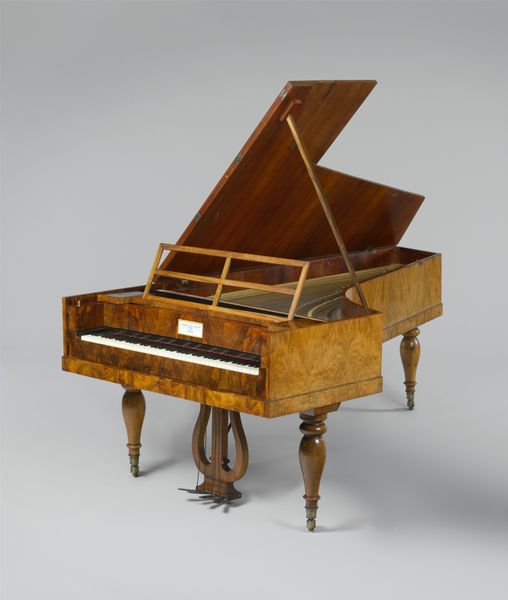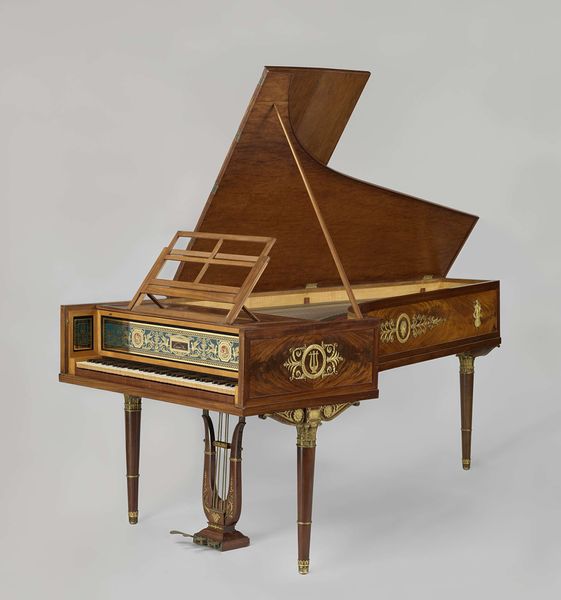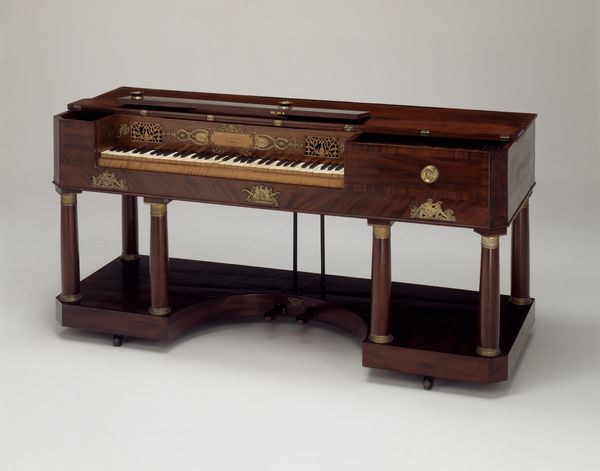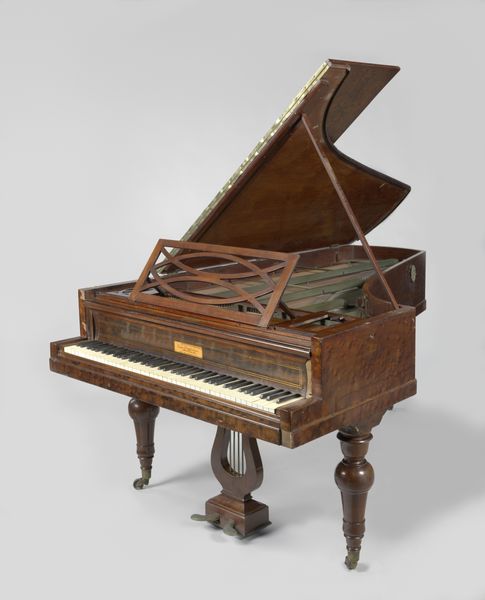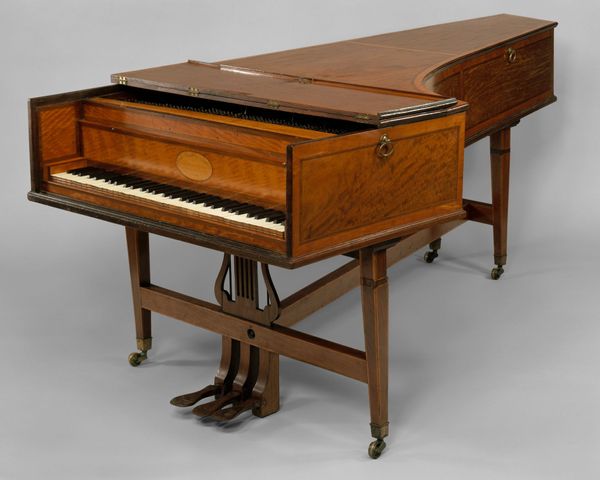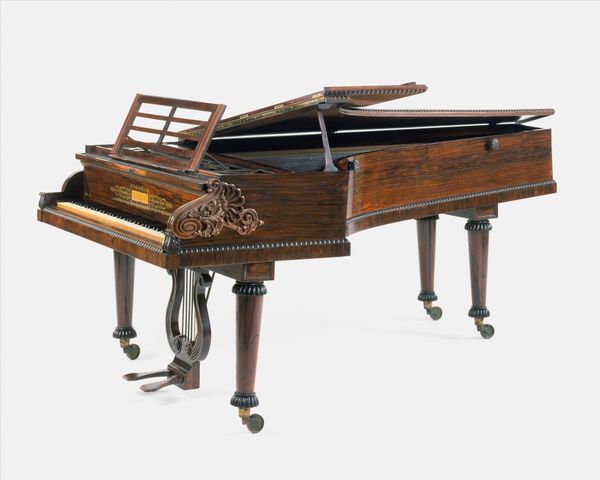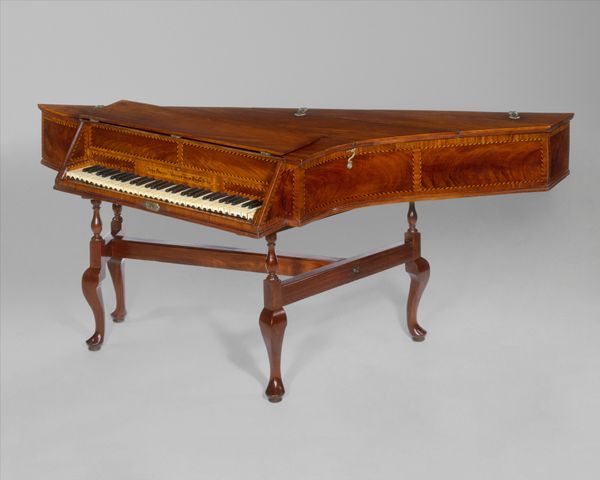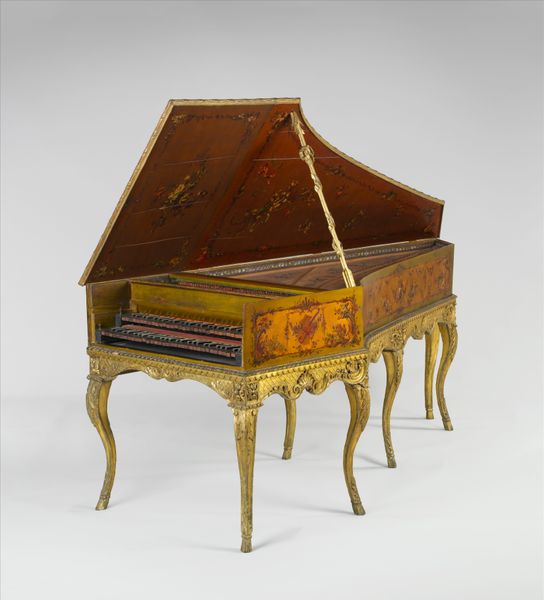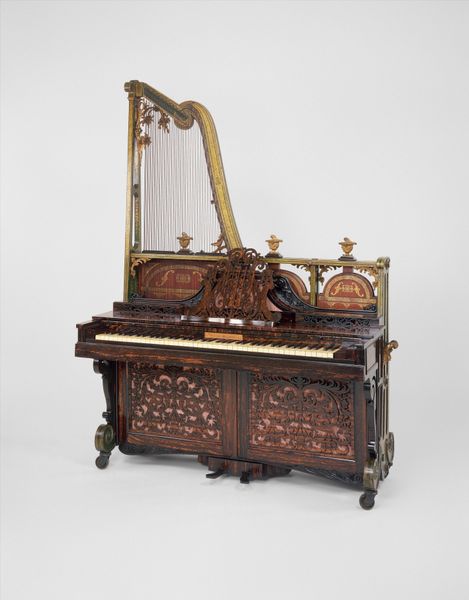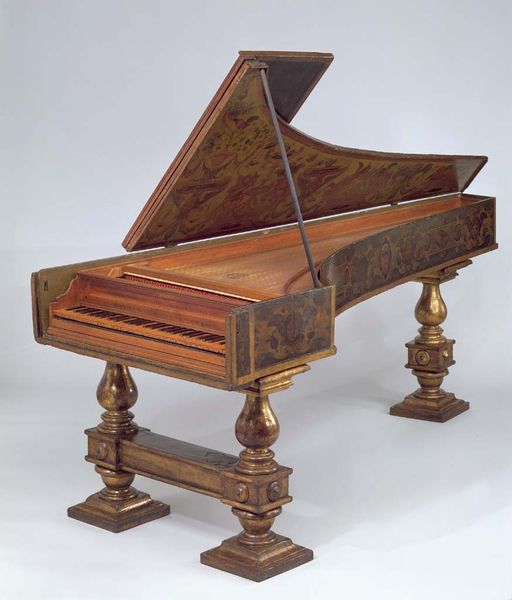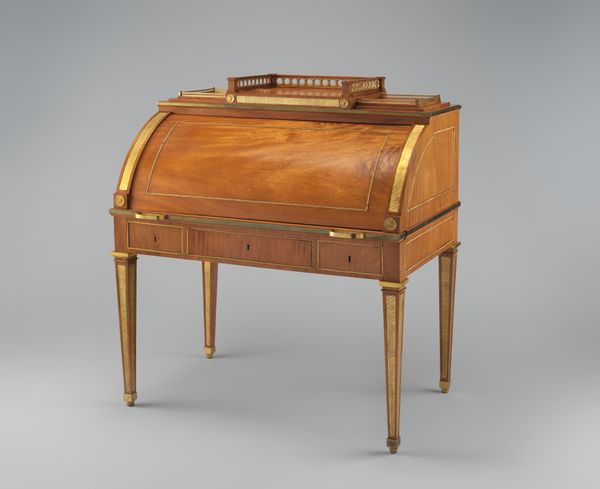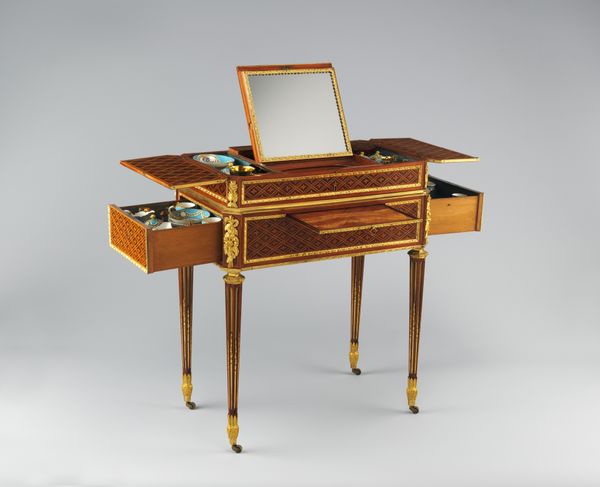
wood
#
neoclacissism
#
united-states
#
wood
#
musical-instrument
Dimensions: Overall: 19.7 x 170.8 x 61cm (7 3/4 x 67 1/4 x 24in.); Stand: H. 96.9 cm (27-1/2 in.); Stool: H. 53 cm (20-7/8 in.), Greatest W.: 36.5 cm (14-3/8 in.)
Copyright: Public Domain
Curator: What a fascinating example of early American craftsmanship! This is a Square Piano, created sometime between 1800 and 1825 by Babcock, Appleton, and Babcock. Editor: It's unexpectedly small! It’s perched so delicately on those slender, reeded legs. And the wood is gorgeous. I wonder what kind it is? Curator: Probably mahogany, a popular choice at the time. You see, the piano as an instrument really took off in the late 18th and early 19th centuries. They were often status symbols, and makers really pushed the boundaries in terms of decorative detailing. This model definitely evokes Neoclassical ideals. Notice the balanced form and restrained ornamentation. Editor: Absolutely. The decorative panels just above the keyboard feel…aspirational, somehow. Like little trophies or badges of cultural refinement, carefully affixed. Also, look at those metal pulls! It makes me think about workshops, apprentices, the sheer labor involved in shaping all these components. I’m guessing the woodworking involved various specialist skill sets. Curator: Exactly. It embodies cultural refinement, as you suggest. These pianos appeared in fashionable parlors across the United States, signaling a family's interest in arts, music and education – especially the education of young women. It really spoke volumes about social standing. The musical instruments and their symbolic value really represented aspirations during that time period. Editor: I find myself equally drawn to its imperfections—the signs of age, the slight asymmetry. The surface, its nicks and scratches—they speak to its lived experience. It makes you wonder whose hands have played upon this, who sang, laughed, cried with it and for it. Curator: Yes, indeed. And its design echoes prevailing notions of order and harmony during an era defined by social transformation in early America. Neoclassical taste aligned neatly with the creation of an ordered Republic. It served to stabilize societal constructs. Editor: Considering its age, it is striking that such an object of bourgeois entertainment is now under a protective museum enclosure. These days it has more symbolic than functional use value. Curator: Well, looking closely reminds us that these objects aren't simply inanimate things; they resonate with profound human experiences. Editor: And invite reflections on skill, work, and cultural value across different eras. A worthy meditation.
Comments
No comments
Be the first to comment and join the conversation on the ultimate creative platform.
